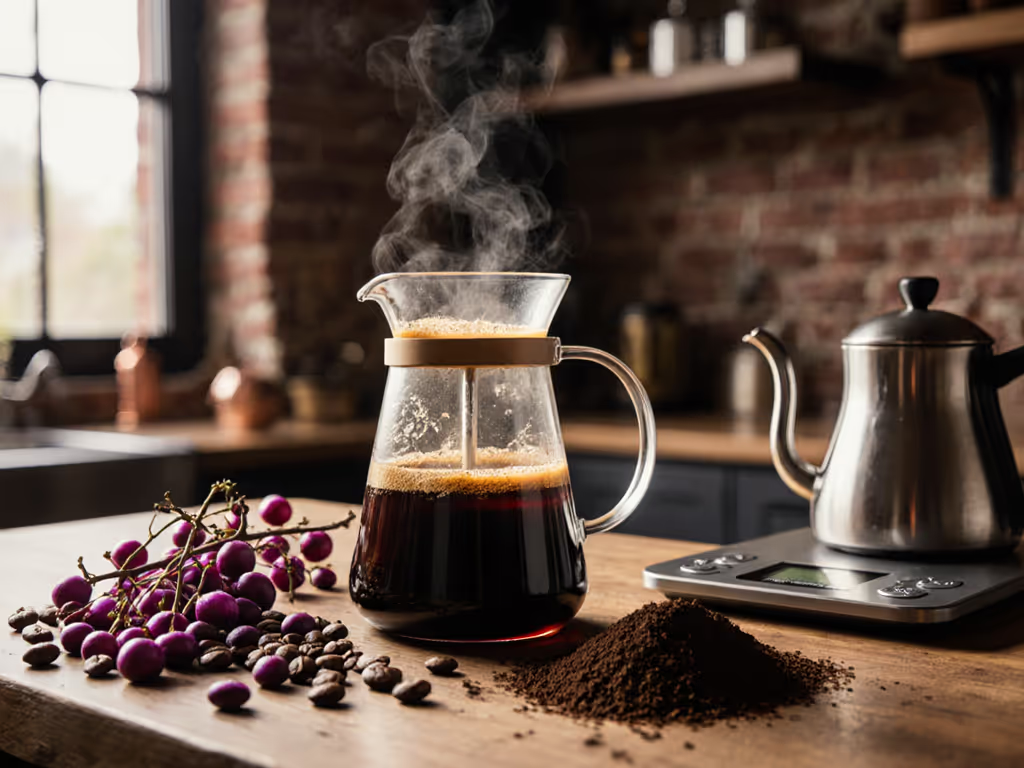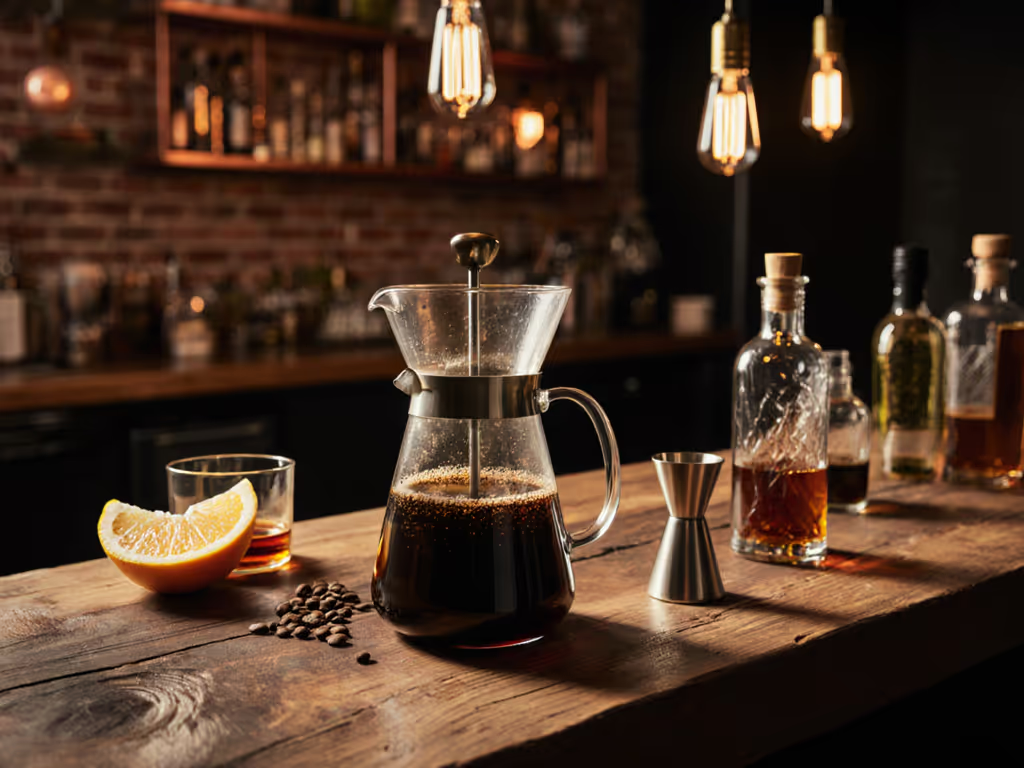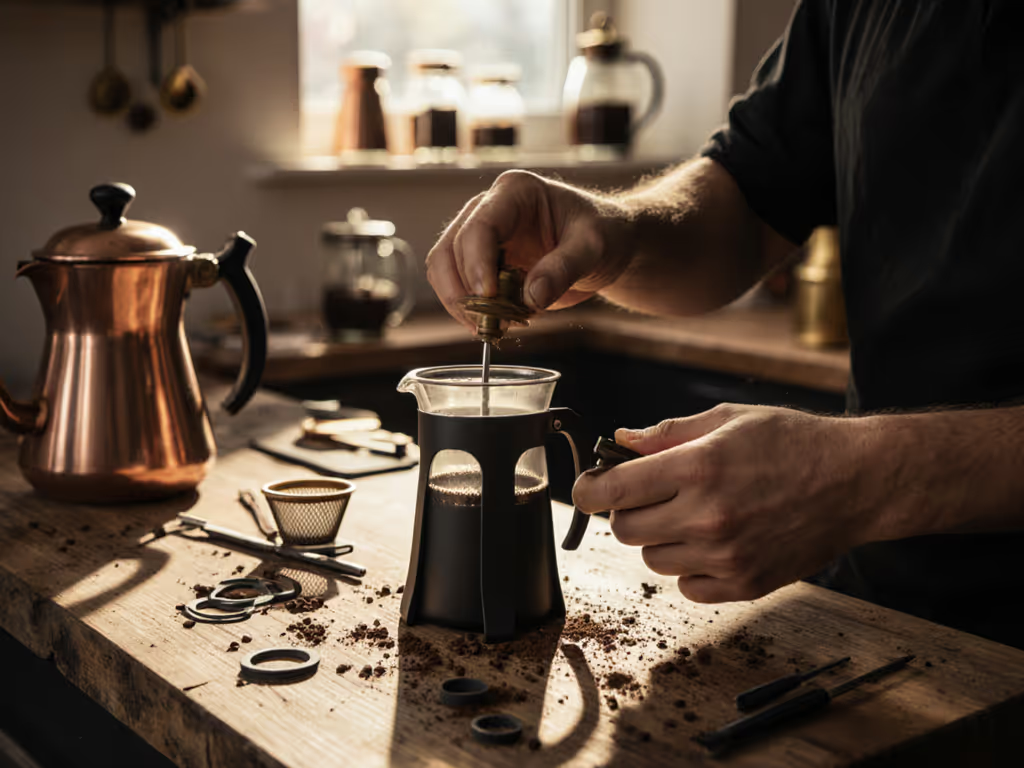
How to Make French Press Coffee Perfectly
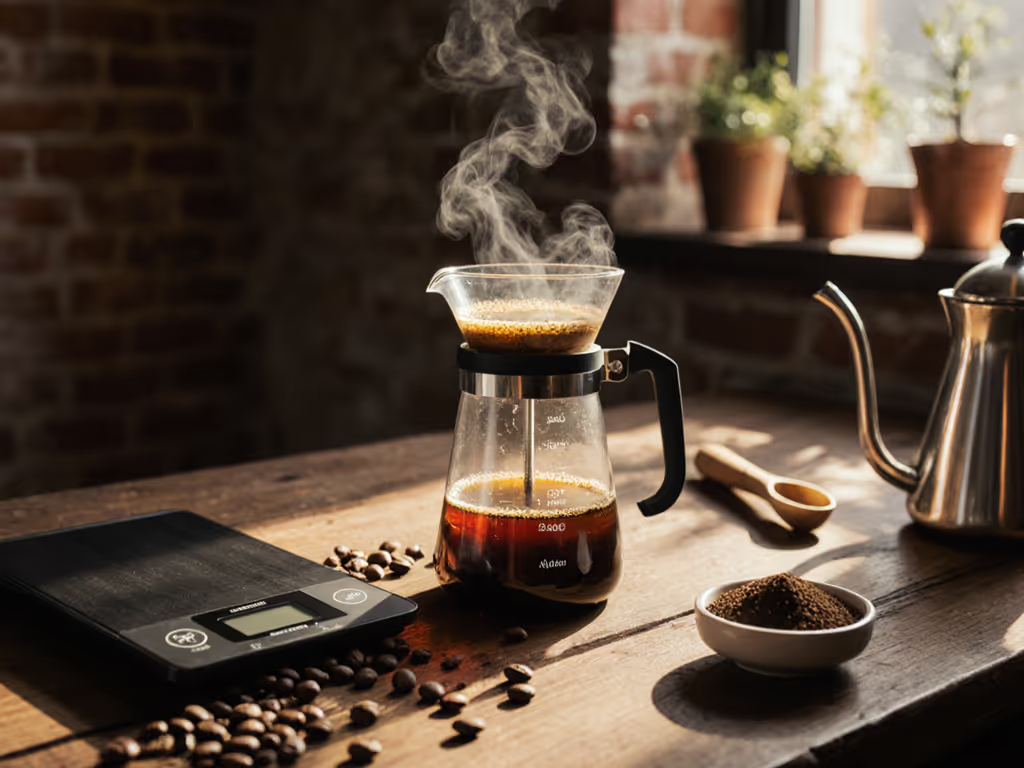
If you've ever wondered how to make coffee using French press but felt overwhelmed by conflicting advice, you're not alone. That murky cup with inconsistent flavors? It's rarely the press - it's usually three variables changing at once while we scramble for perfection. Start small, taste big - this is the heartbeat of dialing in any brew. Like the friend who reset her 'broken' French press by focusing on one grinder click and one water ratio, you'll find clarity through repetition, not revolution. Mastery lives in the margins of your tasting notes, not the marketing hype. Let's turn your French press into a repeatable ritual with guardrails that actually work.
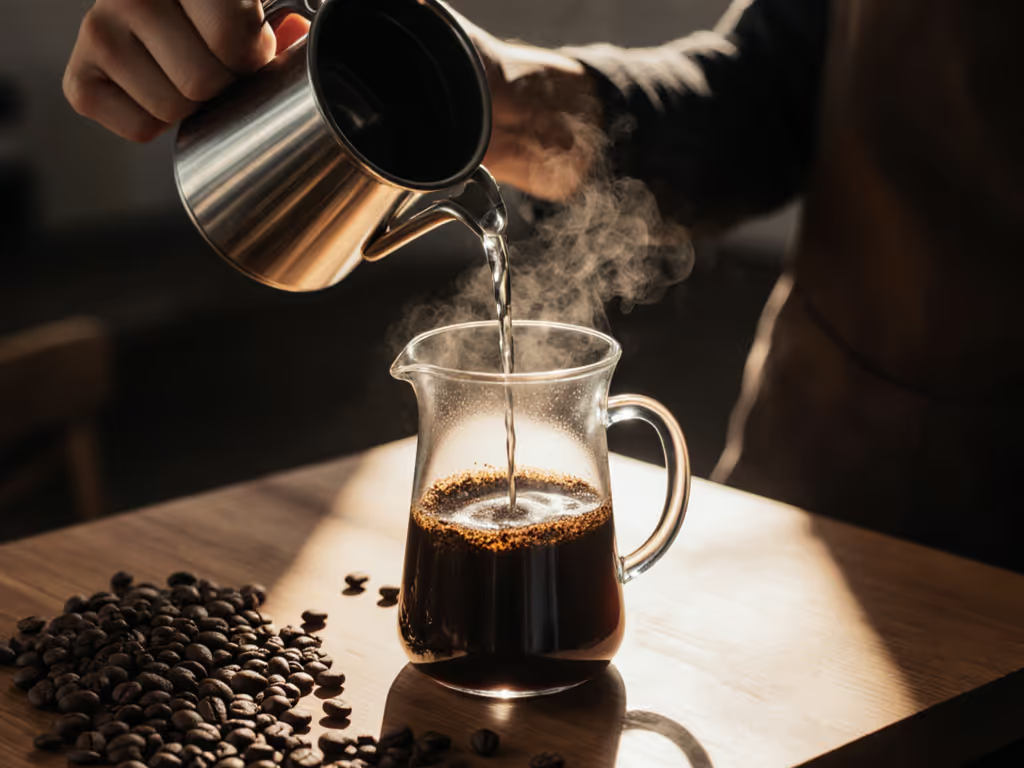
FAQ Deep Dive: Your French Press Questions, Answered
What's the simplest framework for consistent French press coffee, how to brew?
Forget chasing 'perfect' settings. Begin with one-variable-at-a-time framing: lock your ratio, water, and mug size first. Then adjust grind. My community-tested baseline:
- Ratio: 1:15 coffee-to-water (e.g., 30g coffee for 450ml water)
- Water temp: 200-205°F (boil, then wait 30 seconds)
- Mug size targets:
- 8oz mug: 22g coffee + 330ml water
- 12oz mug: 30g coffee + 450ml water
- 16oz mug: 40g coffee + 600ml water
- Brew time: 4 minutes flat (no stirring mid-steep)
This baseline handles most grinders and water sources. For precise measurements and troubleshooting, see our French press coffee ratio guide. Only after tasting notes reveal imbalances (e.g., 'sour at first sip') do you tweak one thing: grind coarseness or time +/- 15 seconds. No ratio changes. No water switches. One knob, turned slowly, tasted on purpose.
How do water minerals impact French press coffee? (Without the chemistry lecture)
Hard water (300+ mg/L) exaggerates bitterness; soft water (<50 mg/L) makes coffee taste flat. Aim for 120-150 mg/L total dissolved solids - easily achievable with most filtered pitchers. If your tap is very hard, mix 50/50 with distilled. If it's very soft, add a pinch of calcium carbonate (baking soda won't cut it). Test this after fixing grind and ratio - minerals magnify existing flaws, they rarely cause them. Track how 'bright' or 'muted' your Kenyan feels with each adjustment. Sensory descriptors anchor your experiments to reality.
Start small, taste big. Your palate is the final authority - not a chart or influencer.
Why does my French press coffee taste muddy or bitter?
Two culprits: over-extraction and sludge management. Bitterness usually means:
- Grind too fine (adjust only if ratio/time are locked)
- Brew time exceeding 4:30 in standard mugs
- Leaving coffee sitting in the press post-press (pour immediately!)
For sludge: use a coarse 'breadcrumb' grind and never tap the press to settle grounds. If using a glass model like the classic Bodum Chambord, try pouring through a paper filter into your mug for special occasions - preserving body while reducing silt.
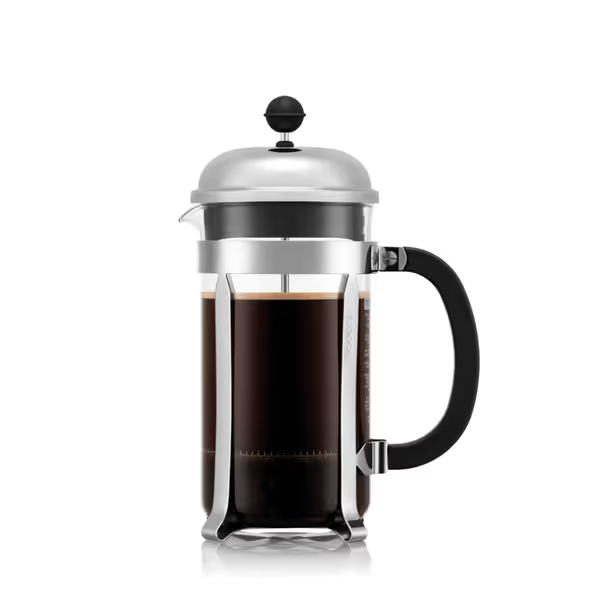
Bodum Chambord French Press
How do I fix inconsistent results without buying new gear?
Track your variables like a scientist, not a barista. In your notes, log:
- Grinder setting (e.g., '21 clicks from zero')
- Water source (e.g., 'Brita filtered, 140 mg/L')
- Taste verdict ('balanced, mild astringency after 3rd sip')
If Tuesday's brew is duller than Friday's, check one changed variable: Did you grind 30 seconds earlier? Was the water 5°F cooler? This is why I reject 'guru' methods demanding 17 steps. Repeatable presses thrive on stripped-down guardrails - not complexity.
What's the fastest cleanup routine that prevents clogs?
The 45-second rescue method:
- Dump grounds into compost/bin (no water yet!)
- Add 1 tsp dish soap + hot water to 1/4 full
- Plunge once to agitate
- Rinse thoroughly
Why it works: Dry disposal avoids sink clogs. Soap-first cleaning dissolves oils before they stick. For outdoor use, pack a collapsible cup - the Bodum Chambord's stainless frame handles camp stoves better than fragile glass. Always rinse grounds before adding water if you lack a compost bin.
How do I adapt French press coffee for camping or offices?
Weekend mode (camping):
- Use a stainless steel press (glass breaks near campfires)
- Pre-measure coffee in ziplocks for 12oz mugs
- Boil water off the stove before adding (thermal shock cracks glass)
Weekday mode (office):
- Label your ratio on the press lid (e.g., '12oz: 30g/450ml')
- Assign 'press captain' for weekly deep cleans
- Use a carafe instead of direct pouring to avoid sediment
Both scenarios demand the same core ritual: one ratio, one timer, one taste note. That's how you avoid the 'office press graveyard' of abandoned gear.
Your Invitation to Confident Brewing
The French press isn't finicky - it's faithful. When you anchor experiments to measurable changes (not moods or marketing), you'll unlock the rich, full-bodied coffee this method promises. That morning cup should feel like a gift, not a chore. Next time you brew, try this: Adjust only your grind setting by one click. Taste. Write it down. Repeat tomorrow.
Ready to go deeper? Grab my free Dial-In Blueprint - it maps grind settings to common burr mills, water mineral bands, and mug sizes. No gear required, just curiosity and your existing press. Because perfect French press coffee how to starts not with what you own, but how you pay attention. Start small, taste big.
Related Articles

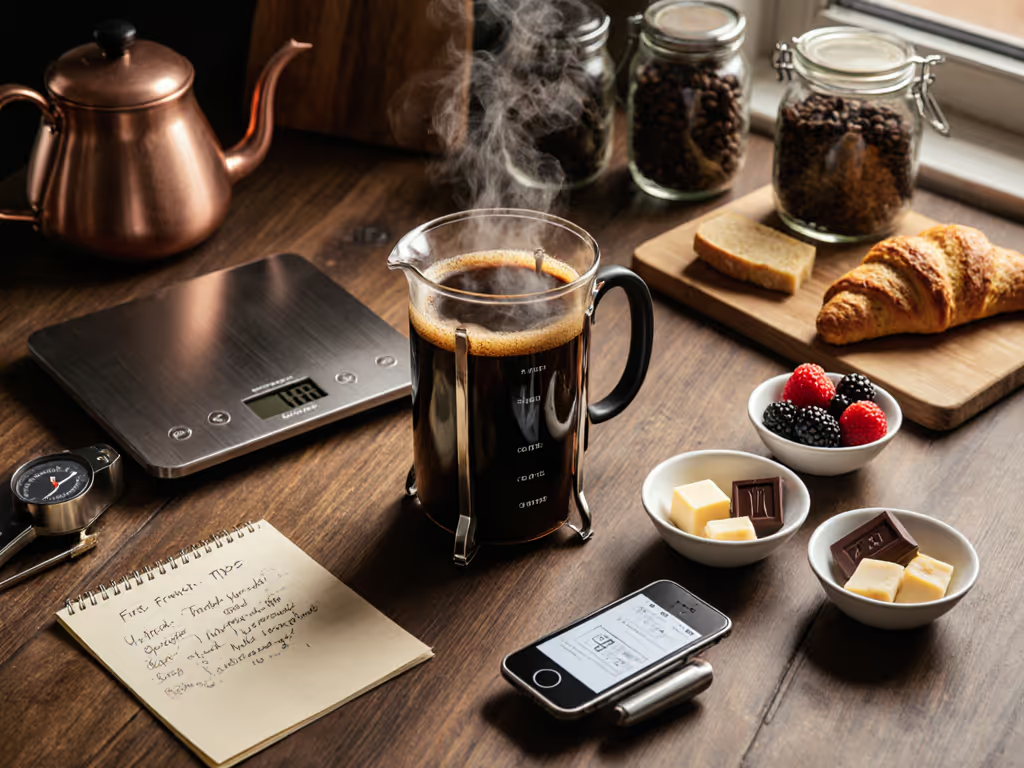
French Press Pairings: Data-Driven Food & Coffee Matches
